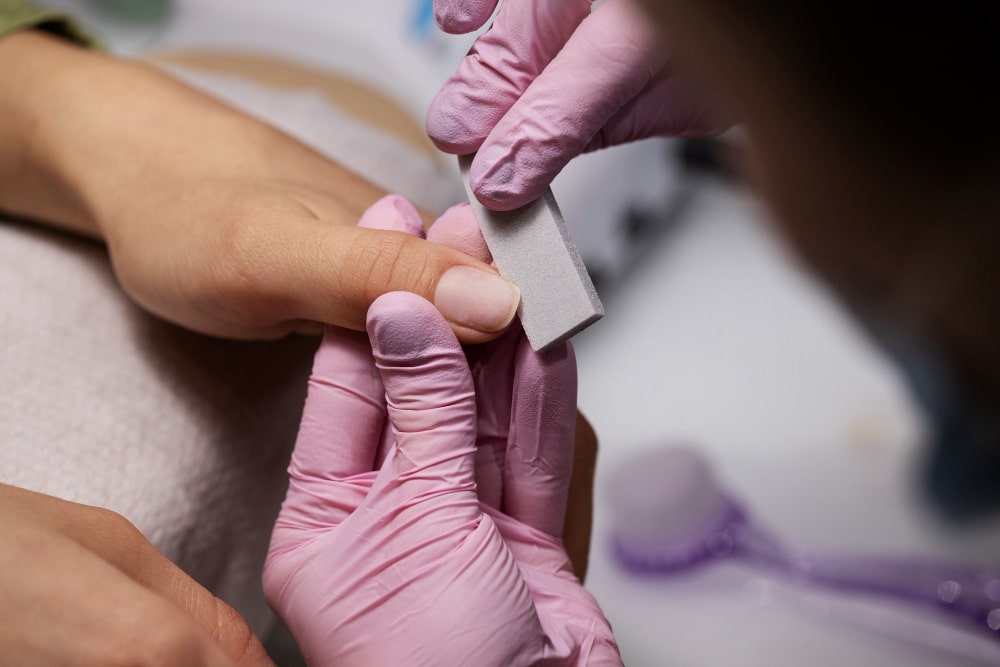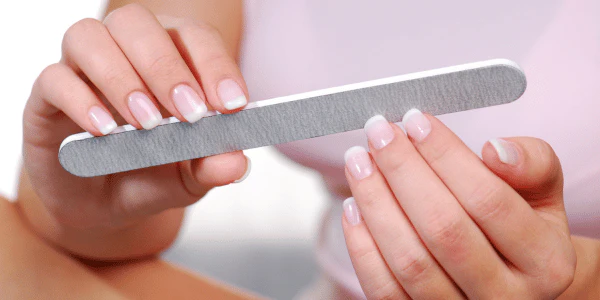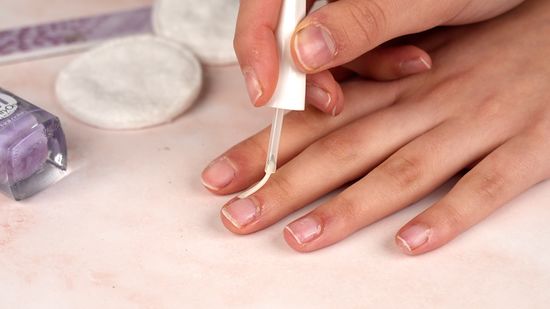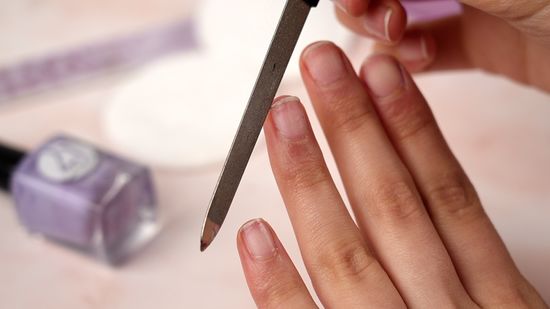Your dream beauty career starts here—30,000+ students and counting

CEO/Founder Of Bela Beauty College
Buffing your nails can make them appear stronger and shinier when done correctly, but over-buffing or using the wrong technique can weaken them by thinning the nail plate. The key is moderation, the right tools, and understanding your nail type.

Buffing is the process of gently polishing the surface of your nails using a nail buffer tool.
It’s a physical technique used to polish nails with a block or buffer, typically in multiple grits.
Buffing removes tiny imperfections from the keratin layers that form the nail plate. It creates a smooth finish by flattening the surface and removing dull buildup, helping the nails appear healthier.
Understanding the structure of a fingernail is key to knowing how buffing affects them.
Nails are made of:
Buffing interacts only with the nail plate, but repeated friction:
Overbuffed nails may look overly thin or translucent.
Nail thinning can increase sensitivity and peeling.
Improper buffing can also trap moisture, weakening nail integrity.

When done right, buffing can enhance nail appearance and even health in subtle ways.
Yes, in moderation. The pros include:
Buffing stimulates the nail bed and can encourage blood flow, which supports healthy growth – especially useful before a manicure.
It can if overdone or done incorrectly.
Avoid excessive force. Nail buffing should be gentle and controlled, never aggressive.
It depends on the condition and type of your nails.
Nail Type | Recommended Frequency |
Brittle or Thin | Every 6-8 weeks |
Normal/Healthy | Once a month |
Thick/Ridged | Every 2-3 weeks |
Damaged/Peeling | Avoid until recovered |
Use a buffer with a fine grit and only make 4–6 light passes per nail. Do not buff wet or soaked nails — they are more fragile.
Yes, gently. It helps polish last longer by removing oils and creating a slightly tacky surface.
Let’s compare:
Feature | Buffing | Filing | Nail Strengtheners |
Purpose | Surface smoothing | Shape and length | Reinforce nail structure |
Tool Used | Buffer block | Emery board, file | Polish or treatment |
Effect | Smooth & shine | Shape control | Adds protein/minerals |
Risk Level | Medium (if overdone) | Low | Low to Moderate |
Ideal For | Polish prep, shine | Length control | Damaged/weak nails |
Ridge fillers are a chemical solution used under polish, while buffing is a manual technique.
Use strengtheners if nails are already weak. Buffing can make them look stronger but won’t rebuild keratin.

You don’t have to buff to get glossy nails.
A no-buff nail care routine may include gentle oiling, keeping nails trimmed, using hydrating base coats, and avoiding polish removers with acetone.

Let your nails rest between treatments. Overworking them—whether through polish or buffing—can lead to long-term damage.
“Buffing makes nails grow faster.”
False. Nail growth happens in the nail matrix, not at the surface.
“Buffed nails are automatically healthier.”
Not true. Appearance ≠ strength.
“Frequent buffing strengthens nails.”
Wrong. Too much buffing leads to thinning.
“Buffing before gel or acrylic is always required.”
Only light prep buffing is needed. Overdoing it weakens the nail plate.
Suite 7
144-156 George Street,
Fitzroy Victoria,
Australia 3065
1212-1175 Douglas Street 7
Victoria,
Canada V8W 2E1
6 Clayton Street
Newmarket, Auckland
New Zealand 1023
5th Floor
60 Cheapside
London EC2V 6AXa